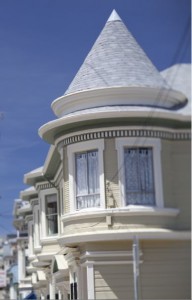
Changes in U.S. home prices are watched with the steely focus of a hawk. So why is it that the numbers released monthly by economists and government agencies swing so wildly from one another?
The Federal Housing Finance Agency, for example, announced last week that home prices rose a remarkable 3.7 percent in May, year over year, while the highly respected Case-Shiller Index reported Tuesday that May prices actually fell by 0.7 percent, year over year. The private research firm CoreLogic, meanwhile, took a middle-of-the-road approach, declaring that home prices were up 2 percent in May.
Who should you believe?
In fact, all the numbers are valid for the specific parameters they’re based on. The FHFA measures loans backed by Fannie Mae and Freddie Mac, so it tracks fewer homes with subprime loans or jumbo mortgages. Case-Shiller tracks only the 20 largest metro areas, and more-expensive homes have a bigger impact on its results. CoreLogic’s method is similar to the FHFA’s in some respects and to Case-Shiller’s in others.
A recent article in the Wall Street Journal tried to bring some clarity to the numbers jumble, but it only served to highlight the flaws in the forecasts. Case-Shiller’s prices, for example, are three to four months old by the time they’re reported, and broad national averages have no bearing on local sales activity.
If you’re looking to sell a home, or buy one, the numbers that really matter are those where you live.
At Pacific Union International, we track home prices in the local communities that make up our Bay Area real estate markets. And our numbers are as current as possible. While the latest national averages focus on home prices in May, we’re busy right now gathering numbers through the last day of July. And our Bay Area quarterly results tell a story you won’t find anywhere else.
In some East Bay communities, for example, median home prices jumped 28 percent in the second quarter of 2012 from the previous quarter. In Contra Costa County, virtually all homes priced in line with their appraised value below $1.3 million saw multiple offers in the second quarter, while those priced significantly beyond their appraised value sat on the market unsold.
Comparing Bay Area home prices from June 2011 to June 2012 shows the diversity of our real estate markets: The median sales price — the midpoint in the range of prices — for single-family homes in San Francisco rose $56,275 to $800,500, and condominium prices jumped $112,500 to $752,500. In Marin County, the median sales price fell $2,750 to $792,250, while in Napa County the median price rose $8,500 to $352,000. The Sonoma County median sales price rose $25,100 to $345,000, and the median price for communities in the eastern Sonoma Valley region jumped $80,750 to $475,000. In our East Bay region, the median sales price rose $21,000 to $649,500, and in Contra Costa County it rose $27,000 to $697,000.
Along with the recent, steady increase in home prices, we reported on the Bay Area’s housing recovery months before national averages spotted the same trend. And we’ll keep right on looking locally for the trends that affect Bay Area homebuyers and sellers.
